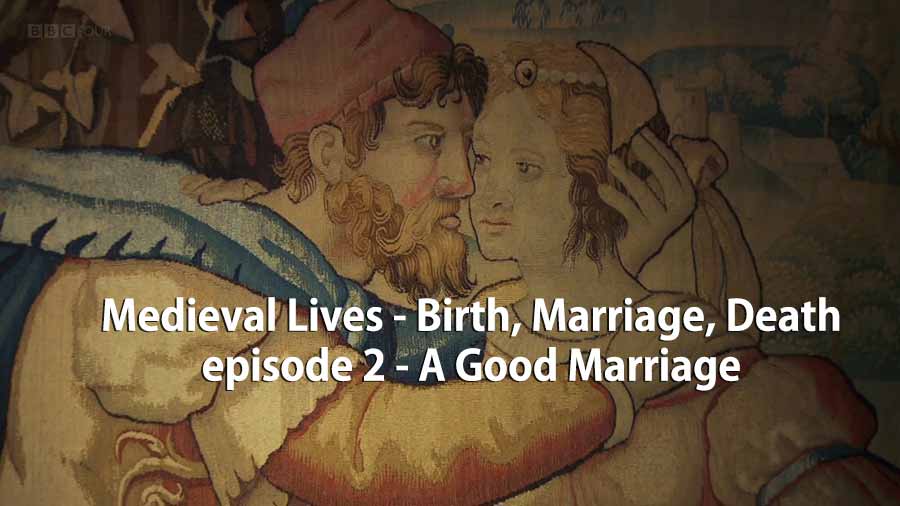Medieval Lives – Birth, Marriage, Death episode 2 – A Good Marriage: Unlike birth and death, which are inescapable facts of life, marriage is rite of passage made by choice and in the Middle Ages it wasn’t just a choice made by bride and groom – they were often the last pieces in a puzzle, put together by their parents, with help from their family and friends, according to rules laid down by the church.
Helen Castor reveals how in the Middle Ages marriage was actually much easier to get into than today – you could get married in a pub or even a hedgerow simply by exchanging words of consent – but from the 12th century onwards the Catholic church tried to control this conjugal free-for-all. For the church, marriage was a way to contain the troubling issue of sex, but, as the film reveals, it was not easy to impose rules on the most unpredictable human emotions of love and lust.
Medieval Lives – Birth, Marriage, Death episode 2 – A Good Marriage
Historian and author Helen Castor explores how the people of the Middle Ages handled the most fundamental moments of transition in life – birth, marriage and death.
In Medieval Lives: Birth, Marriage, Death, historian and author Dr. Helen Castor (She-Wolves: England’s Early Queens) examines how the people of the Middle Ages handled three of life’s great rites of passage birth, marriage, and death. Why were physicians of no help to women enduring the pains of labor and the dangers of childbirth? Why were newly married couples “put to bed” by the priest on their wedding night? What did it mean to “die well” and why was death such a communal affair, both before and after it happened?
In seeking answers to these and other questions about the medieval world, Castor examines the ways in which the Church dominated the rites and rituals of life, and how every aspect of people’s daily existence was colored by their awareness of the afterlife. She goes on to reveal that, by the end of the Middle Ages, changes in the Church as a result of the Protestant Reformation would mean that these rituals would never be the same again.
